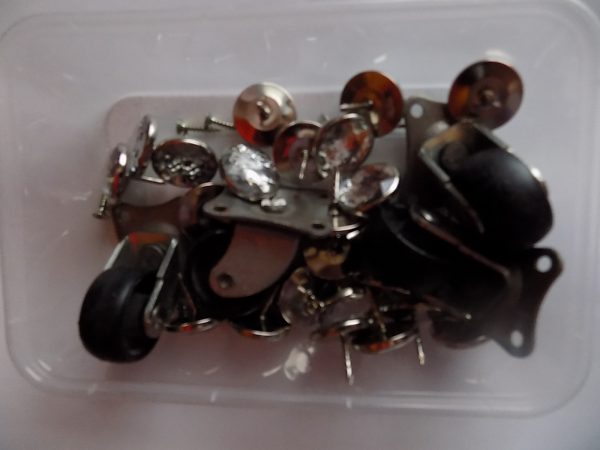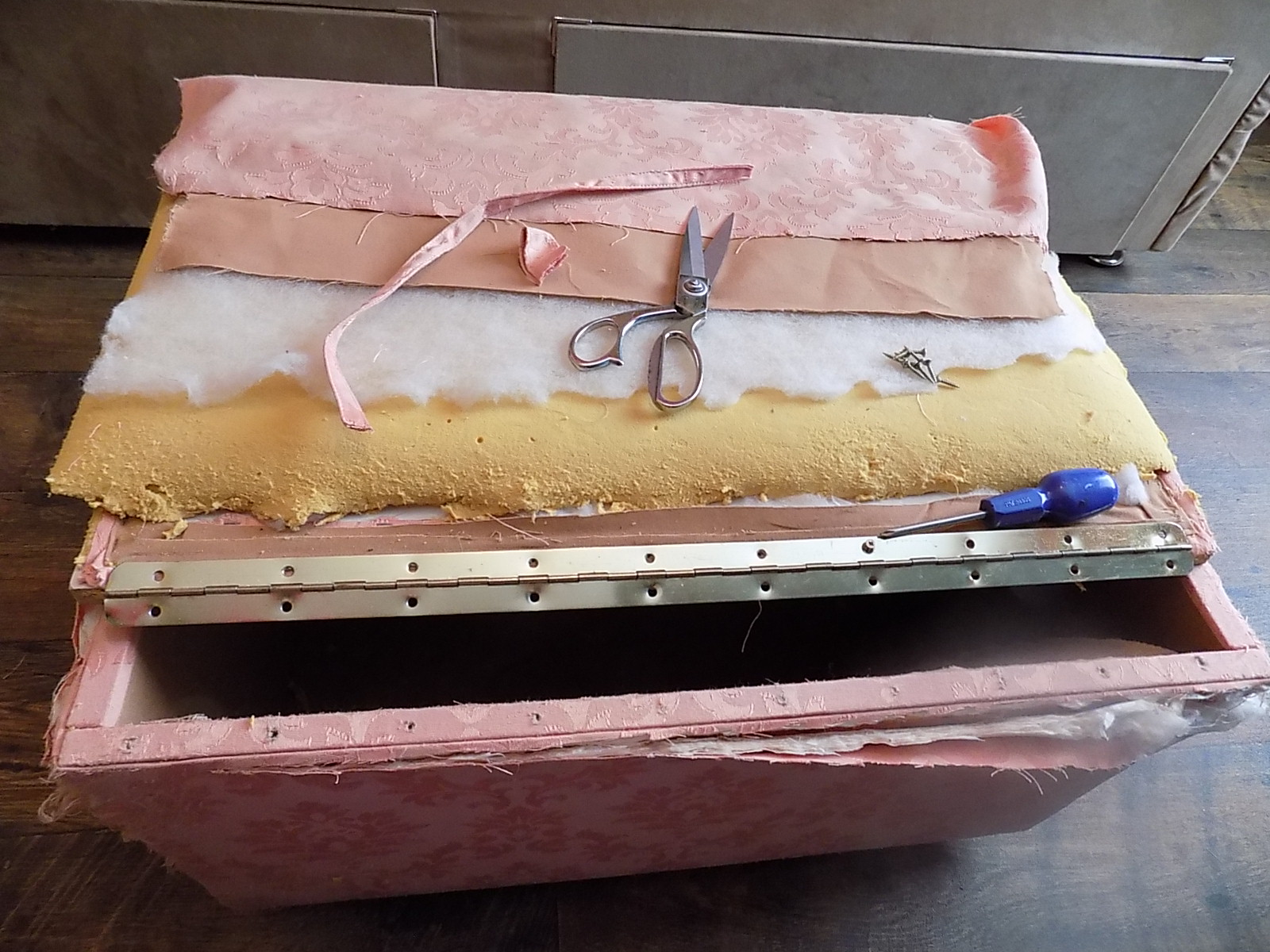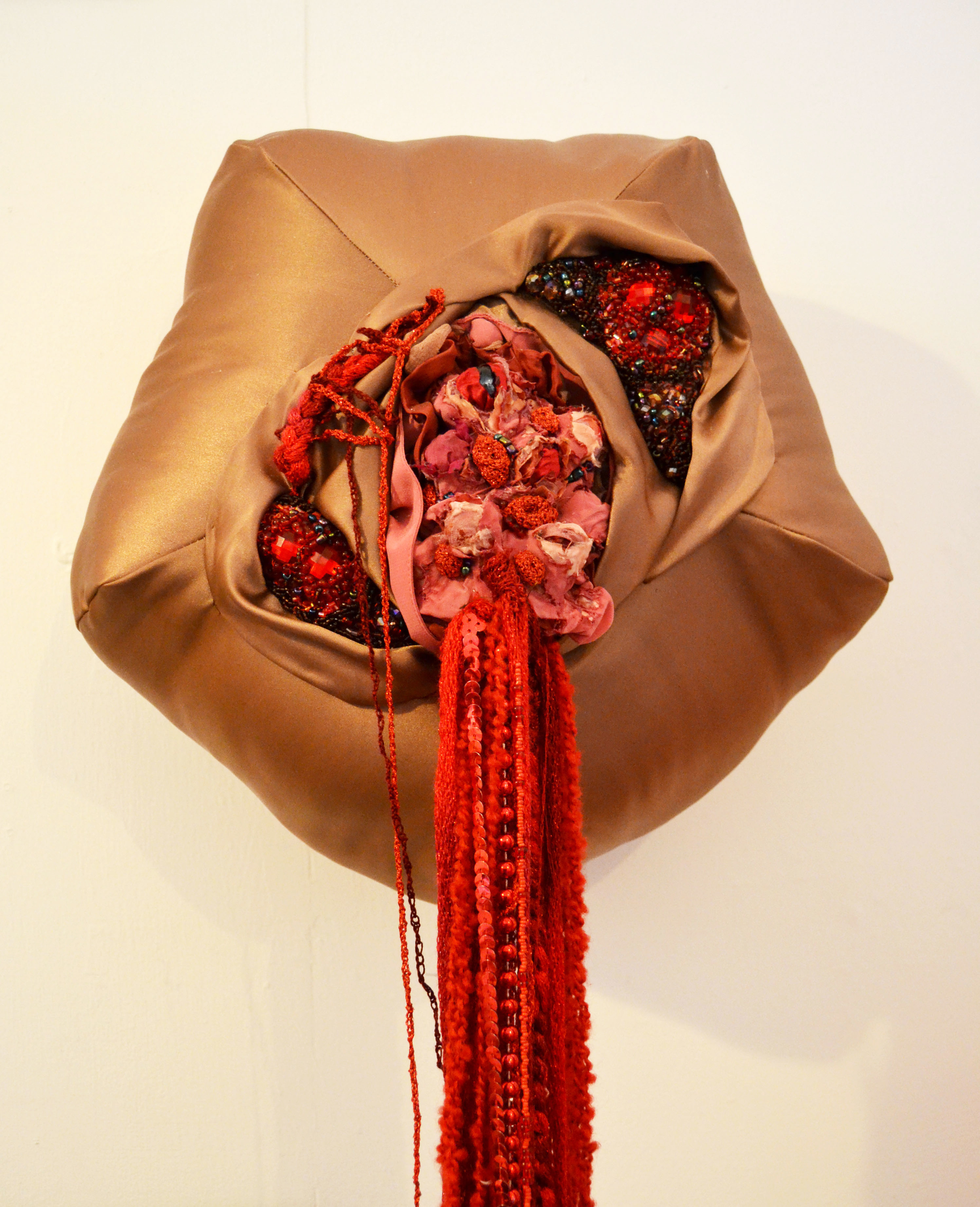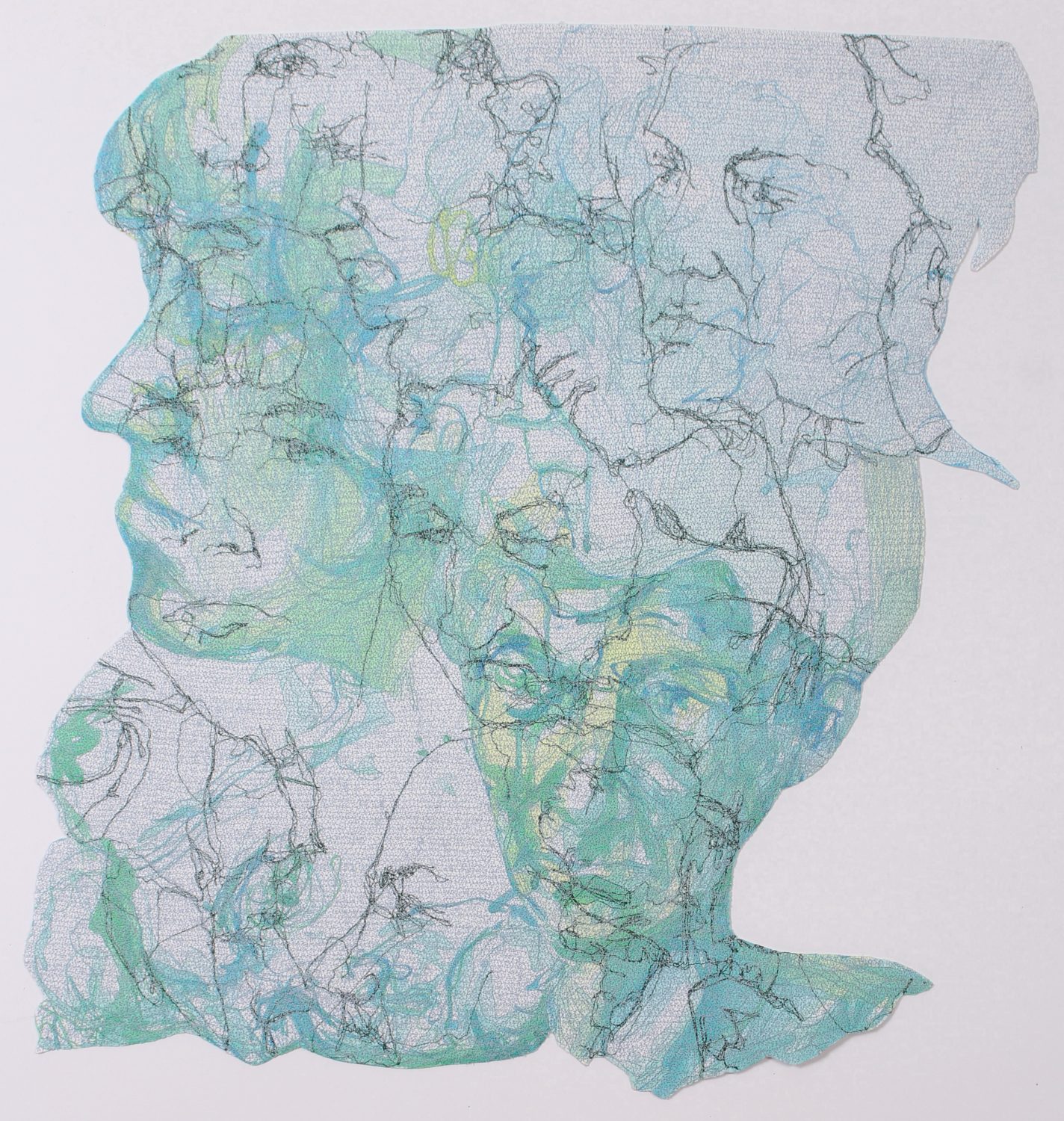
As a textile artist my work is created from recycled materials. I source from the usual places – car boot sales, charity shops, flea markets, freecycle, donations from family and friends. Household furniture can be a great source of inspiration, both old and new. Here are some tips to encourage you to recycle fabrics covering furniture before heading to the skip.
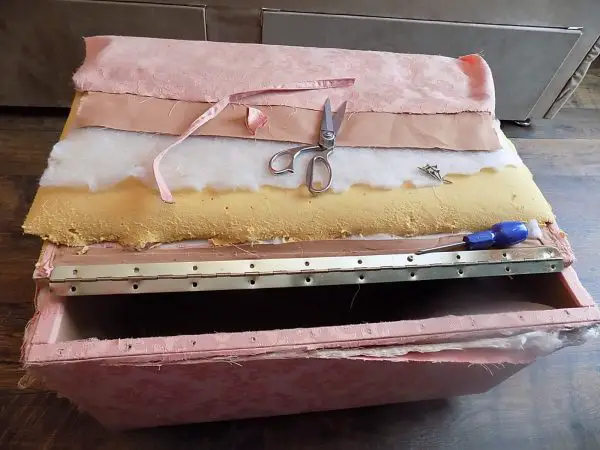
Worn surfaces
Old furniture is usually very well crafted with layers of foam padding, wadding and fabric. I celebrate materials eroded over time, such as the foam padding on the seat (lid) of the storage chest. Erosion of the surface creates texture and is a great material to be molded and easily cut.

Metal structure
Do not dismiss metal structures within the framework of furniture. This metal hinge conjures up corsetry within historical costume and will be recycled into my Womanhood Collection.
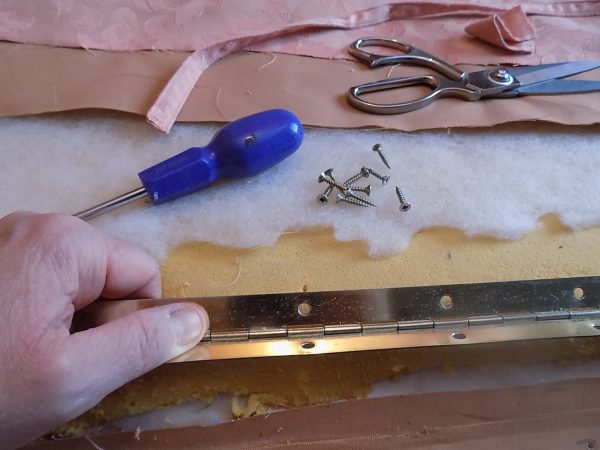
Interior linings
The interior lining can be a great source of additional fabric. The bigger the box the bigger the fabric pieces. Neatly cut along edges to remove and see if you can pull the fabric from seams..
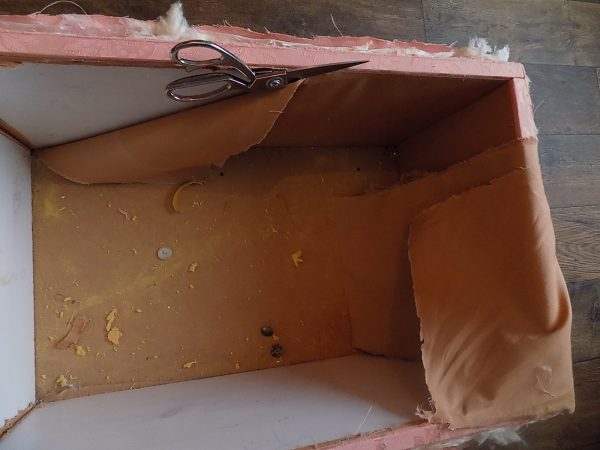
Damaged surfaces
We have always had cats as an addition to the family home and they love to sharpen their claws on furniture! Rather than dismissing this as ‘damaged’ I celebrate the texture created.
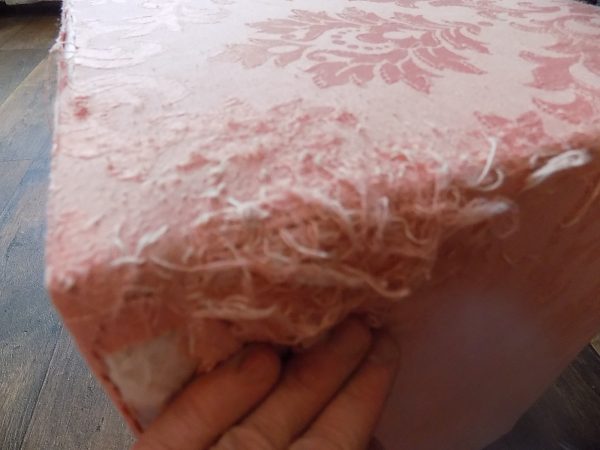
Removing wadding intact can be tricky. I find pulling away from staples creates tearing but this can provide a window into the interior of layers creating the cushioning effect.
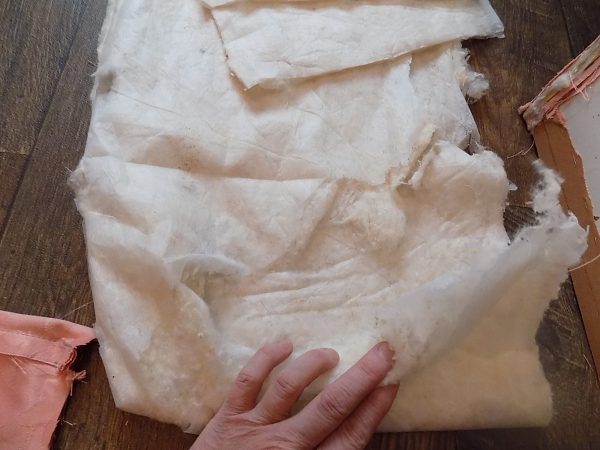
Faded fabrics
Sunlight and time naturally fades the intensity of colour in fabrics. Use this to express depth within a delicate colour palette.
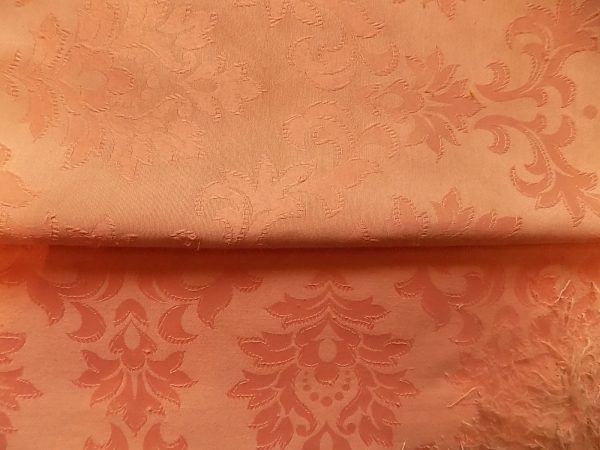
Remnants
Corners and seams are a great source of ready made remnants which can be used in the tatty matting technique. It can be tricky to remove.
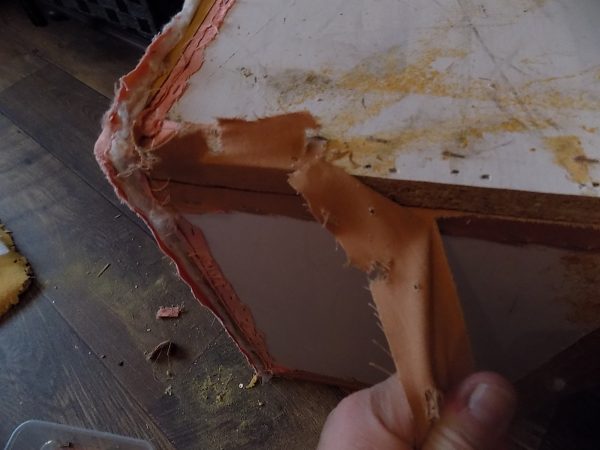
Use cutting, pulling and rolling techniques.
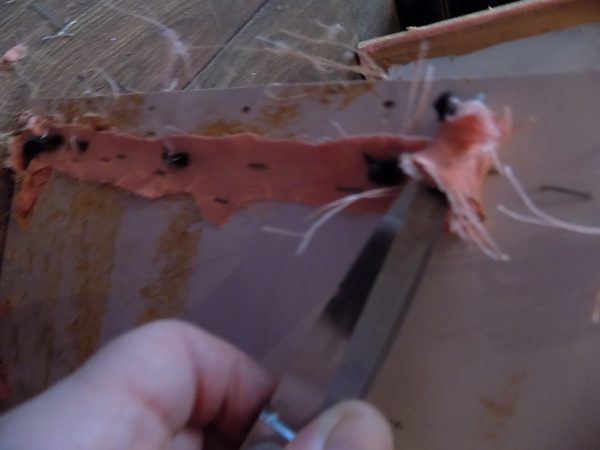
Here is a an example of using remnants to build texture and depth within an abstract flower head.
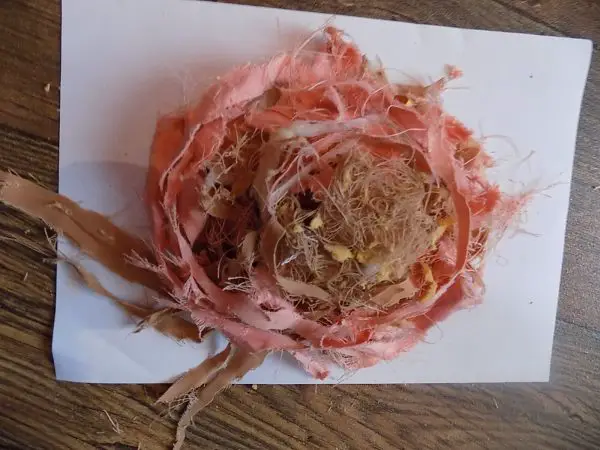
Pattern
Folded fabrics can create pattern in pleated panels and faded areas. My suede headboard will be a super fabric for skin tones. Do not worry if you have to cut away areas. You can cover these or they can become an abstract creation within the design.
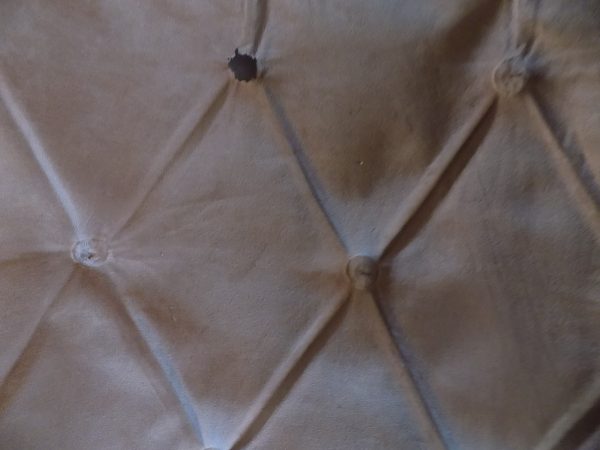
Treasure
Whatever embellishments you rescue will provide a treasure trove of possibilities for future projects. I love the diamante studs from the headboard and feet from the storage chest. Collecting and building a surplus over time encourages new direction within projects. Recycling is fun, creating unique projects which cannot be reproduced.
